
“The long lane of magnolias through which we approached was beautiful. The old manor house with its cupola and walls of masonry two feet thick was charming. The rare trees and shrubs of the old nursery were enchanting. But when I walked out on the grass terrace under the big trees behind the house and looked down over the property, the experience was unforgettable. It seemed that this land had been lying here for years waiting for someone to lay a golf course upon it.” - Robert Tyre Jones Jr. on his first time seeing the land which would become Augusta National Golf Club
When I first took up golf, I noticed it had more in common with surfing than sports like football or even tennis. Both surfing and golf take on a spiritual quality. Mastering those sports lies more in the mental aspect than physical prowess—do less…just feel it…trust yourself. You must respect the natural world; understand there’s always something bigger than you and so little you can control.
So to understand about the sacred grounds of golf, Augusta National Golf Club, you must start with the land.
Among the most striking features at Augusta National is the botanical life that delivers vibrant colors, esteemed spring scents, and beauty in perfect contrast to the lush green fairways and earthy pine needles.
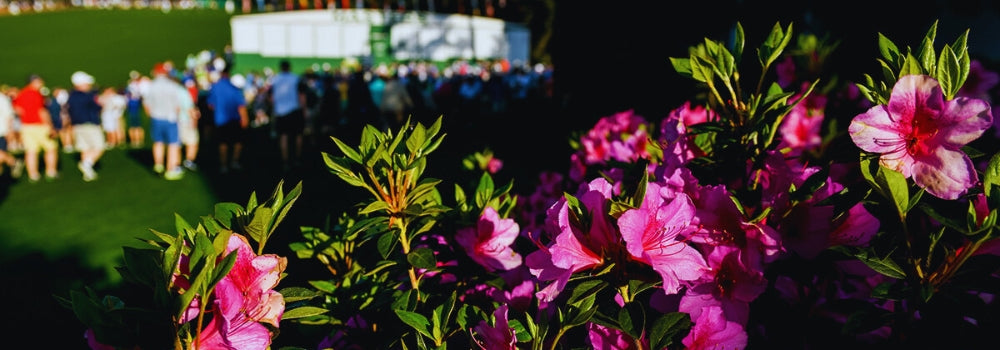
This land began as one of the most successful horticultural sites of the South. Dennis Redmond purchased the 315-acre lot and made Fruitland Nurseries, complete with a residence named Fruitland Manor, now the Clubhouse. In 1858, three years before the beginning of the Civil War, Belgian baron Louis Mathieu Berckmans bought the property and worked with his son Prosper to develop it.
Berckmans’ talented horticulturalists developed the majority of Georgia Peach varieties and the Belgian became known as the "father of Georgia Peach culture." They also imported plants from all over the world, introducing America to many beloved shrubs and trees.
The nursery was known for many things but the azaleas were its signature. Known as the best in the South, azaleas remain the signature plant for the Masters.
The path to the Manor was lined with 300 yards of magnolia trees. Their magnolias, which provide cover over what is now Magnolia Lane, flourished in the century that followed.
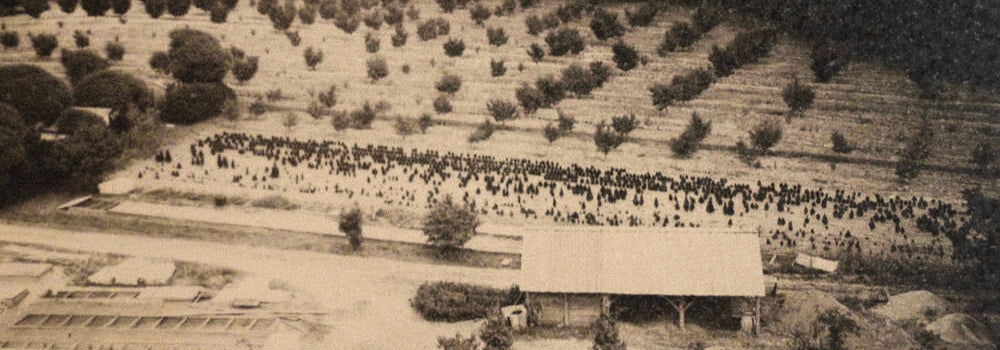
Bobby Jones visited the disused site in 1931 with his friend, New York financier Cliff Roberts, and knew instantly this was where he wanted to build his club.
Let’s dive in and explore the connection between land, people, history and memory that makes the Masters unlike any other sporting event on the planet.
The Garden City
Augusta was built on agriculture and rivers. Merchants used the Savannah River to transport goods to and from Savannah. In the late 18th century, Augusta thrived as a tobacco market as many of its new settlers were tobacco farmers from Virginia and the Carolinas. Shortly after, Augusta was Georgia’s #1 market. This period put three Augustans in the US Senate and the city was visited by George Washington, James Monroe, and Henry Clay. Railroads accelerated trade and made Augusta an important hub as the South expanded.
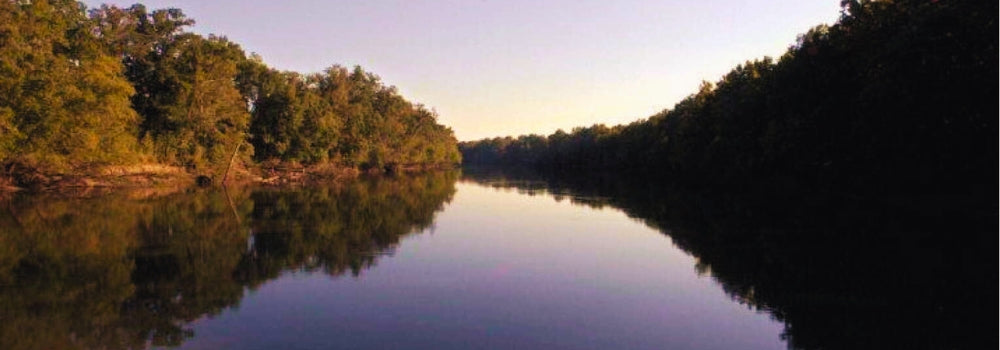
Fruitland Nurseries, run by the Berckmans family, was one of the South’s leading fruit producers in its time and the land which would ultimately become Augusta National Golf Club.
With its abundance of private gardens, thriving horticulture and agriculture markets, Augusta earned the nickname The Garden City. The Augusta Canal was one of the few successful industrial canals in the US—giving the South waterpower after 1845.
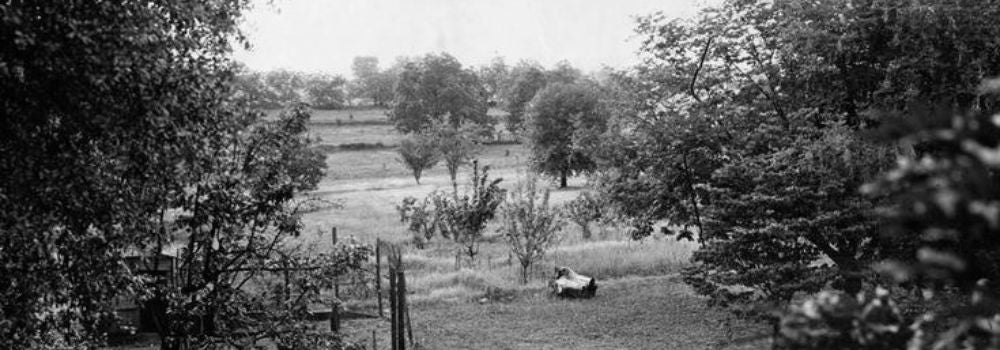
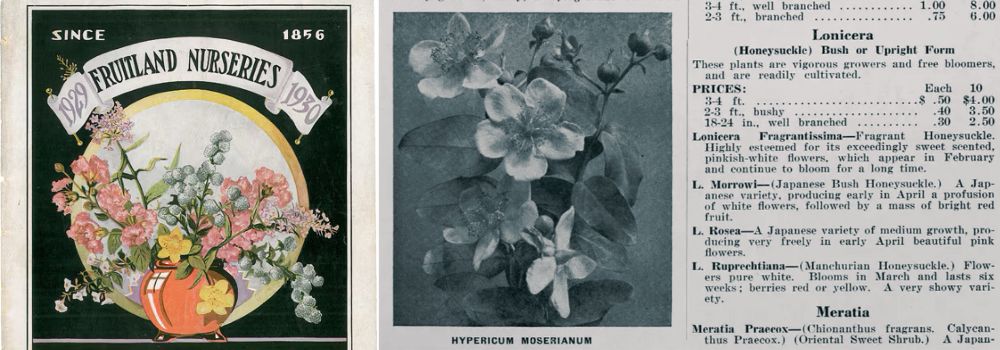
Floods, fires, and boll weevils caused hardships and then the Great Depression hit. However, Atlanta’s great golf hero and a Wall Street financier were in the market for some land to develop a golf course.
Bobby Jones was the largest sporting figure of that era other than Babe Ruth. He embodied grace, dignity, and the quintessential Southern gentleman. And he won, big. In this era, Atlanta was a relative backwater rebuilding from the Civil War, Jones lifted their spirits and his influence transcended far beyond sports.
Located 150 miles east of Jones’ home city of Atlanta, Augusta was a popular winter retreat known for its splendid gardens and horticulture. He still loved the game and searched for a place to build his vision.
“Our overall aim at Augusta National was to provide a golf course of considerable natural beauty, enjoyable for the average golfer and at the same time testing for the expert player striving to better par,” Jones wrote. He found it in an Augusta fruit orchard.
“It looked as though it were already a golf course,” said Jones. Clifford Roberts was the businessman who executed Jones’ vision, and took it to a whole new level. They made the perfect pair. Keep reading to discover how Jones, Roberts, a US president, and golf legends shaped the land into Augusta National.
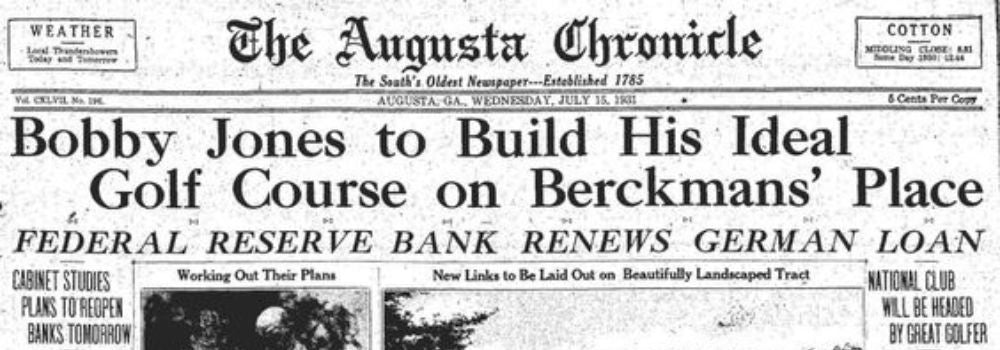
The People Who Made Augusta National
The Legend: Bobby Jones
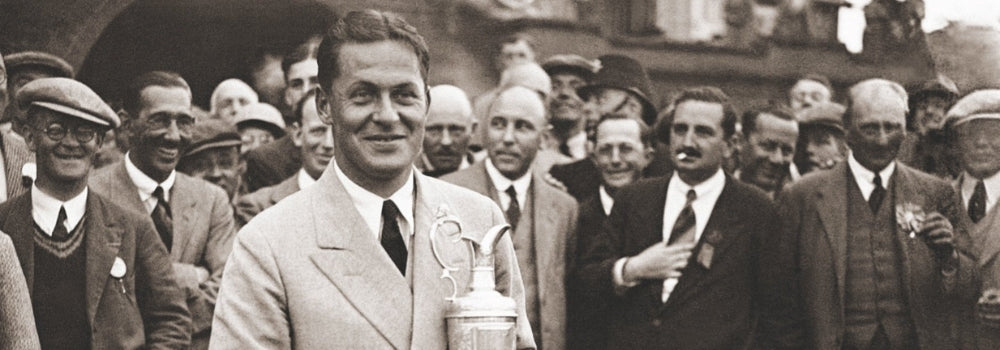
After winning the Grand Slam, and doing more to popularize golf in America than any other figure, Jones retired from championship golf at the age of 28. It was time to focus on his law practice and family in Atlanta. He was also concerned with the attention he garnered. It got harder and harder to enjoy a low-key game with friends. He still loved the game, however, and a vision began to form: develop his own personal golf club, a dream course and a place of peace.
The Architect: Dr. Alister MacKenzie
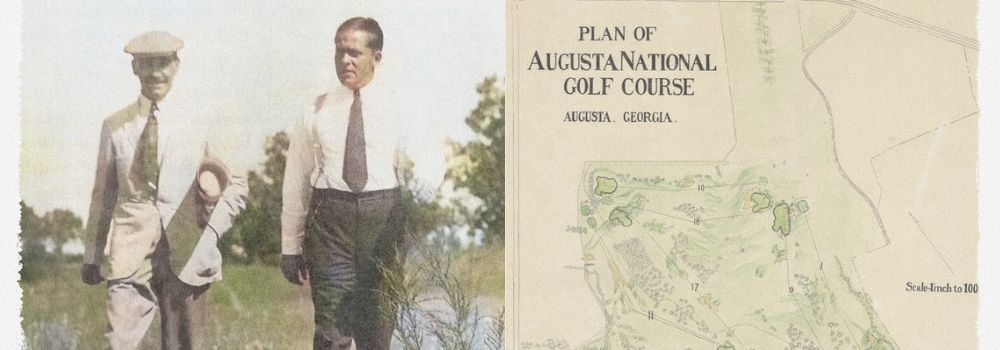
Jones knew just the man to design his dream course. After playing the 1929 U.S. Amateur at Pebble Beach, he stayed on the Monterey Peninsula for the rest of the week. He played the newly designed Cypress Point and met the architect, Dr. Alister MacKenzie. MacKenzie designed 3 of the world's top 10 golf courses.
The Mastermind: Clifford Roberts

Roberts was born on a farm in Morning Sun, Iowa, in 1894. The family moved to Kansas City, Texas, and San Diego. His father sold real estate. After high school, Cliff worked as a traveling clothing salesman. He excelled in sales and aimed for the major leagues of capitalism. He joined Wall Street firm Reynolds & Company in the 1920s. After early success, he took a huge hit in the 1929 crash but bounced back—becoming a top stockbroker with enough money to devote himself to Augusta.
Roberts and Jones were opposites in many ways. Roberts, the somber faced American Gothic painting. Jones, the dashing gentleman sportsman. But this combination, Northern dollar and iron fist meets white glove Southern refinement, proved effective.
Roberts initially stayed behind the scenes in building Jones’ vision. But, as father time impaired the aging icon, Roberts converted the Masters from a cordial Southern respite into the grandest event in sports.
“Roberts’ accomplishments were incomparable. He created, nurtured and assured the permanence of a huge occasion without the endorsement of any organization in his sport, nor with a link, or obligation, to any player or group of players…” - Golf Digest, Clifford Roberts: The Man Who Made the Masters
The trump card of the Masters is its independence. The people who run it have complete control over every decision. Nobody understood the importance of this better than Roberts. Decisions were not made on money (of course they make gobs of money but aren’t squeezing every dime of profit) but to develop a strategic long-term vision—building an exceptional, truly unique experience for members, golfers, patrons, and viewers watching from home.
For example, Roberts had a vision of a commercially limited broadcast, allowing only four-one-minute commercials per hour. Roberts combined this with closeups of the azaleas, Rae’s creek, Magnolia Lane…and the first non-sports anchor leading narration (Walter Cronkite passed but they ultimately found their man). All these elements combine to embed a clear message to the viewer: this is a truly unique spectacle, a tradition unlike any other.
The President: Dwight D. Eisenhower
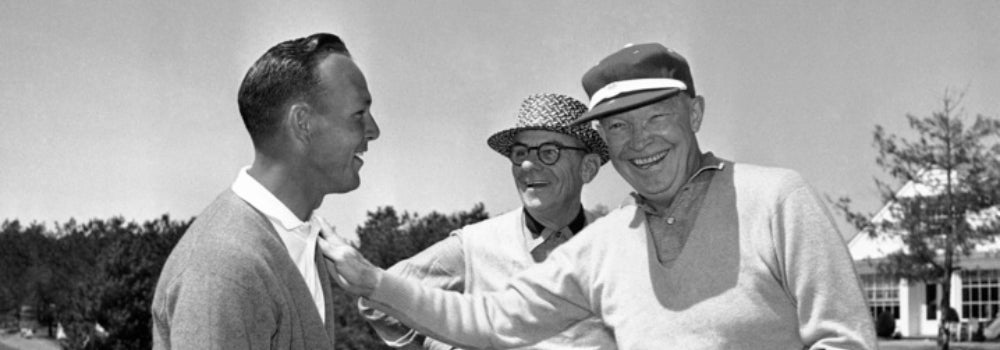
Roberts was something of a hero-worshiper. His biggest heroes were Jones and Gen. Eisenhower, who became a member in 1948. Augusta was the nexus of the inner circle that urged Ike to run for president in 1952. Roberts was tasked with raising the money to fund his run for president (he also served as Eisenhower’s personal money manager). Ike paid 28 distinct visits to Augusta National while in office. A key figure in transcending the Masters from golf tournament to American icon, Eisenhower’s presence still looms large today—from the Eisenhower Cabin to the golf's most famous tree.
The Pantheon: The King, The Golden Bear, and Tiger
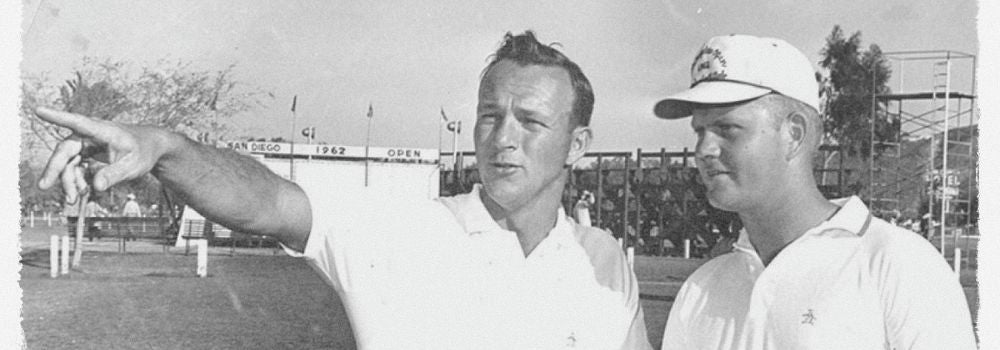
These three men have won the most Masters championships. Though many members have ties to golf, only three pro golfers have been members—Nicklaus, Palmer, and John Harris.
Palmer was one of the few on the planet universally beloved by anyone who ever met him. “The King” was a man of the people. His Masters magic built “Arnie’s Army” as he and Nicklaus traded championships for most of the 1960s. Palmer considered ANGC home; he is a legend everywhere but his legacy in Augusta is rivaled only by Jones.
Nicklaus is considered by many the best ever. He's won the most majors and most Masters championships. His “Maybe…yes sir!” putt in 1986 is arguably the most memorable Masters moment of all time. Watch it here.
Tiger’s dominance, impact on the game of golf, and overarching story are unrivaled. A post could be written on Tiger alone. Seeing him win in 2019 was the best sports experience I’ve seen in person. I felt deeply moved watching Tiger find his authentic swing again after losing it for a time. Being too young to watch Palmer and Nicklaus in their prime, Tiger was the athlete (along with Jordan) for my generation that grew up in the 90s.

The Green Jackets: Members
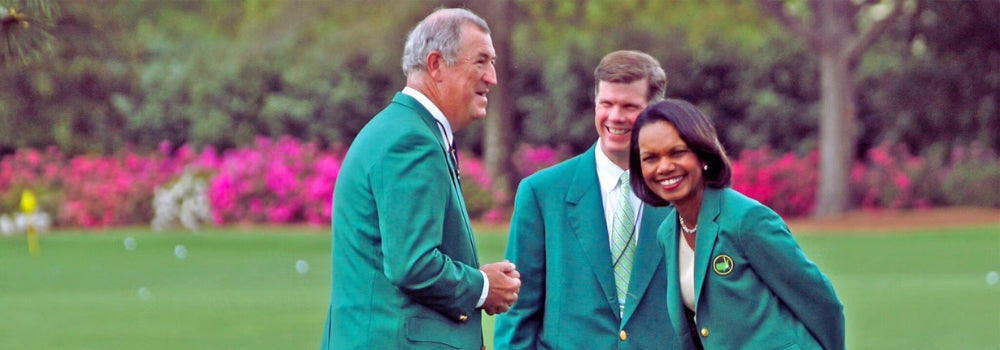
Jones and Roberts took inspiration from British red hunting jackets (used to identify captains of the Royal Liverpool Club) to create a symbol to identify club members. After considering a variety of colors—red, yellow, “Georgia Peach”—they settled on green as an homage to the Augusta grounds. The trademark green jackets were introduced to members in 1937. A dozen years later, “sweet-swinging” Sam Snead was the first champion to take one home.
Members initially consisted largely of Jones’ pals and locals along the Augusta-Atlanta corridor. Today, the member group is perhaps the world’s most powerful group of individuals per capita— consisting of industry titans, billionaires, politicians, and superstar athletes. However, not all have nine figure bank accounts.
Some run a moderately successful business, doctor’s office, or law firm in towns like Augusta, Greenville, or Aiken. Maintaining regional ties, and emphasizing character over clout, are important to the Club. In other words, nobody—no matter how rich, famous, or powerful—can force their way to a green jacket.
So what does it take to become a member at Augusta National? Nobody knows. It’s a combination of many things and the Chairman has 100% of the decision making power. There are some factors that will likely help. Being friends with members and coming around the Club. Having strong ties to golf and/or sports, running a business, Southern roots, exemplary character. Yes, wealth matters, but it’s not about how much money you have. Financial means are more a baseline box to check.
Connecting It All: The Magic of Augusta
The combination of land, history, and people made the Masters what it is. In addition to the special traditions and athletic performances you don’t see anywhere else in golf or sports, this connection bridges past to present—to something much bigger.
Understanding the greater context allows you to feel this connection and appreciate the Masters so much more. You can hear the whispers of Jones on the fairway. Catching a scent of magnolia evokes hundreds of years worth of memories. The roots of a tree remind you of the roots of your own.
Below are our favorite examples of this connection on the course—born of the land and brought to life by Jones, Mackenzie, and every golfer and patron who has been a part of it:
Hole #3 - Flowering Peach
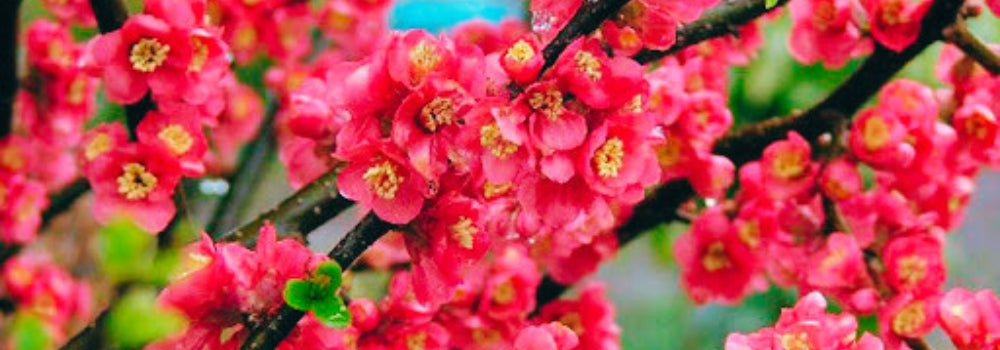
Not to be confused with Georgia Peach, Prunus persica is native to China. Originally introduced to the US by Berckman, these show blossoms come in white, pink, or red; blooming mid-late March.
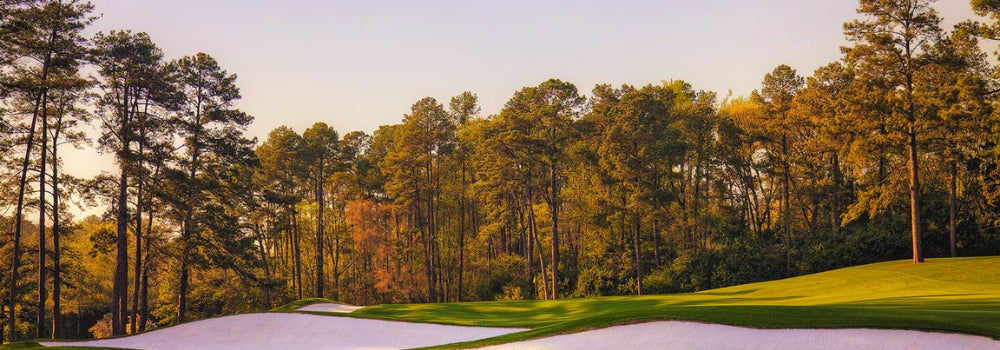
MacKenzie and Jones believe No. 3 to be nearly perfect in design. Representing magnificent greens, this hole has been changed less than any other on the course. You have to be careful. Hitting short, the ball comes back. Hitting long, the ball goes into a deep depression. A favorite hole of two-time champion Tom Watson.
Hole #5 - Magnolia
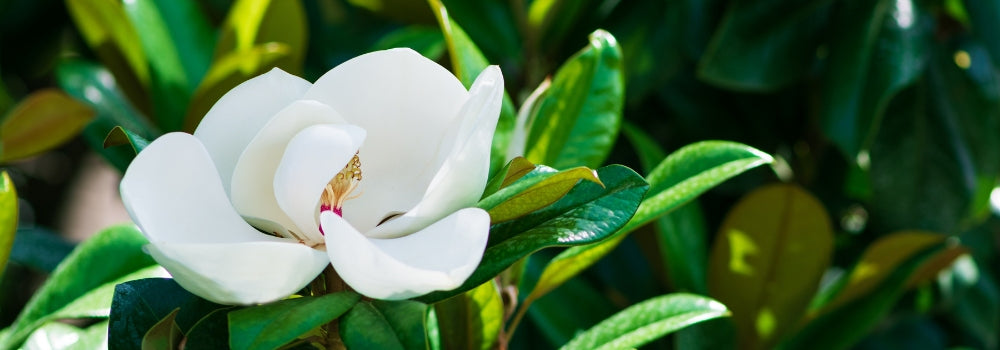
The Magnolia tree is one of numerous native plants from the former Fruitland Nurseries. Striking white flowers adorn this evergreen in May and June—producing a wonderful scent signaling summer is near.

One of the most underrated holes, this 495 yard par 4 features two deep fairway bunkers and a deceptive, sloping green. Many pros—including Matt Fitzpatrick, Justin Rose, and Abraham Ancer—consider it the toughest hole on the course. Before television, you’d have to climb a Magnolia tree to get a good view.
Hole #11 - White Dogwood
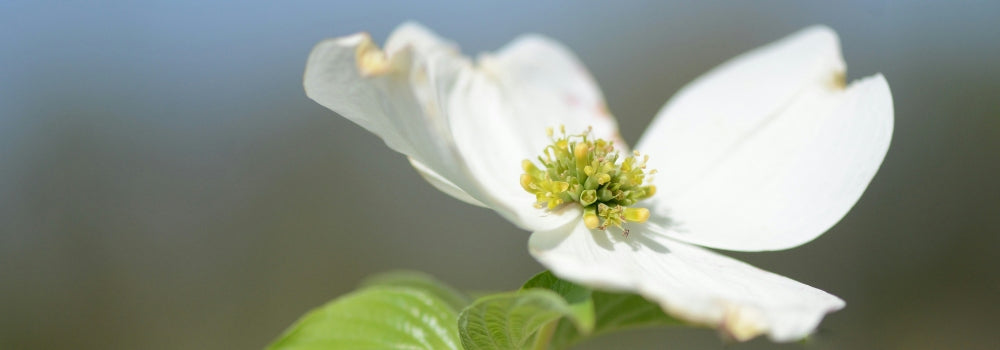
No. 11 takes its name from the White Dogwood, a gorgeous and widely popular flowering tree patrons can enjoy throughout the course. The flowers bloom from March-April to signal the arrival of spring, followed by shiny red berries in August and colorful foliage in the fall, the “aristocrat of flowering trees in the South,” throughout the course.
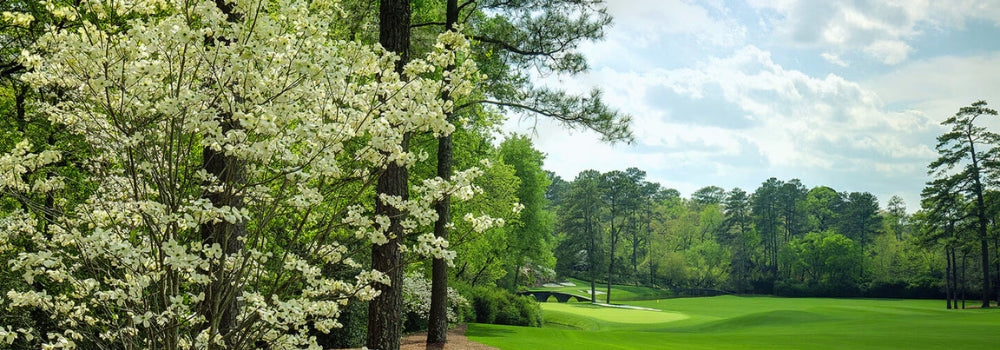
The first hole of Amen Corner is a big reason why many say the Masters doesn’t start until the back nine on Sunday. Wind is often a factor and it’s tricky avoiding the greenside pond and bunker. Best remembered for Larry Mize’s (Augusta native) unbelievable chip-in to beat Greg Norman in a playoff in 1987.
Hole #12 - Golden Bell
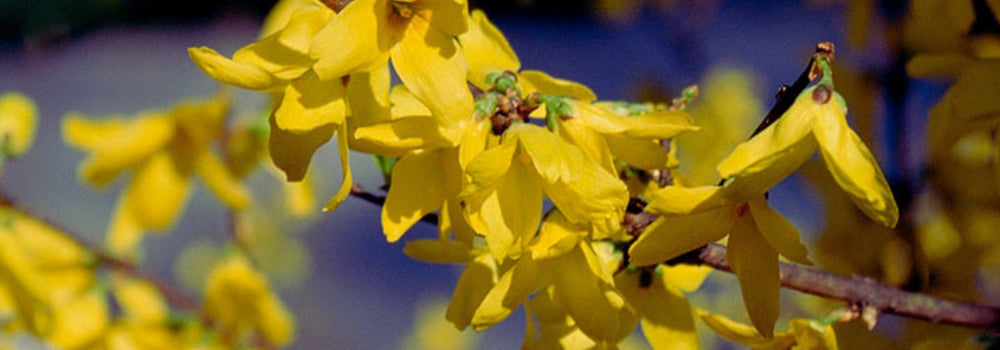
The middle of Amen Corner and one of the most famous holes in the world. No. 12 gets its name from Forsythia intermedia, a shrub native to the Far East (also found throughout the Eastern US) belonging to the Olive family. Produces brilliant yellow flowers when it blooms during March and April.
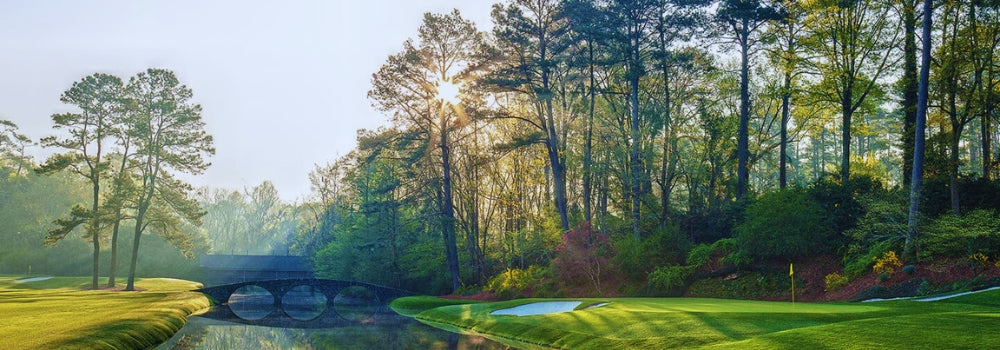
Golden Bell is a stealer of Green Jacket dreams, recently ending Cam Smith’s bid in 2022. Though a short par 3—the strategically placed bunkers, water, and narrow green can break hearts. The walk across Ben Hogan Bridge to reach the green is as quintessential Masters as a pimento cheese sandwich.
Hole #13 - Azalea
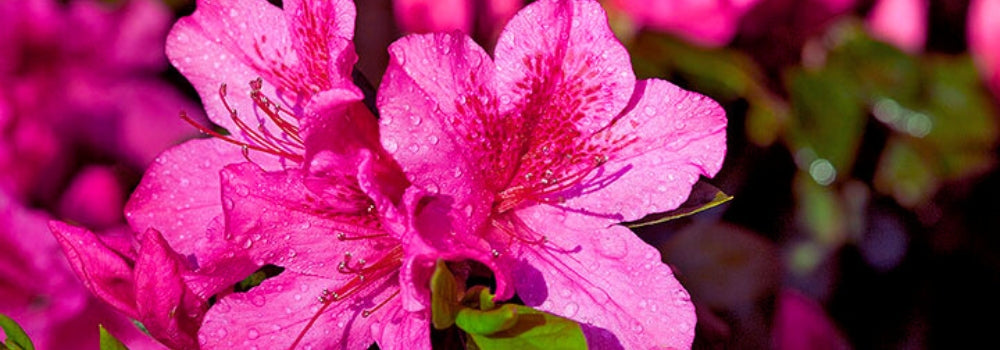
Fruitland Nursery was renowned for its azaleas and it’s the plant for which Augusta National is most noted. So it’s only natural No. 13 bears the name on what is one the course’s most iconic holes. Over 30 varieties are seen throughout the course, both native species and rare older plants (from Berckmans time).
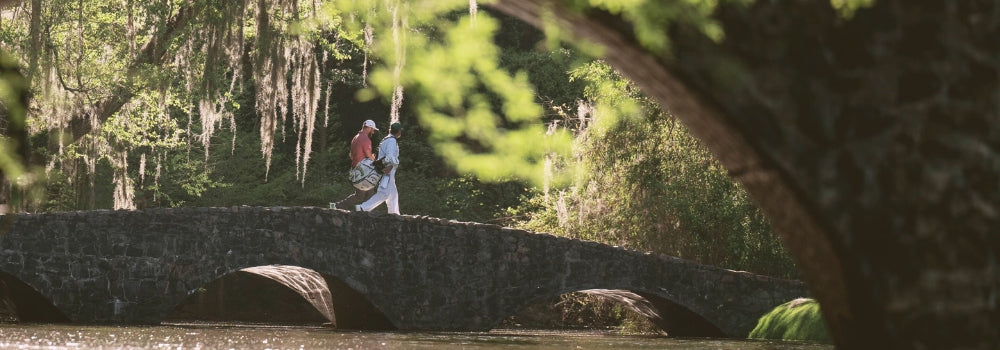
More discovered than designed, virtually all MacKenzie had to do was build a green on the far side of the stream. One of two par 5s on the back nine, the sweeping dogleg left allows players to go for the green in two. Iconic Rae’s Creek and The Byron Nelson Bridge complete this spectacular hole.
Hole #17 - Nandina

Named after a plant known as heavenly or sacred bamboo, No. 17 featured the most famous tree in golf—the Eisenhower Tree—until lost in a 2014 ice storm. Often on the doors of Japanese homes, it supposedly resolves family disputes and brings good luck. You’ll see white blooms in May and red berries (containing cyanide toxic to birds and animals) in the fall.
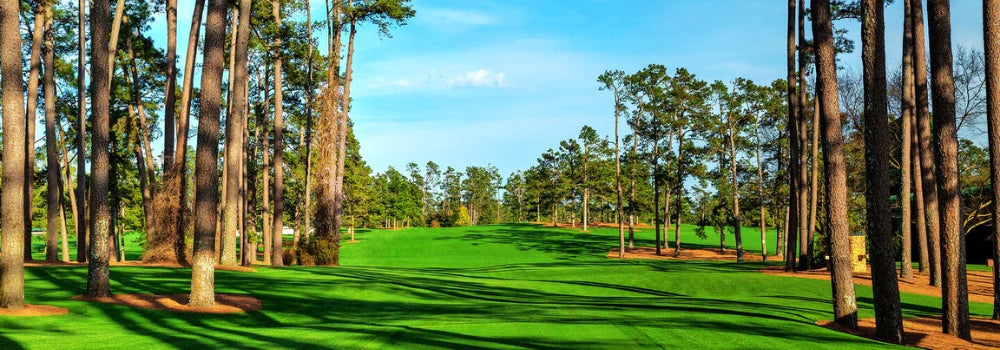
The uphill par 4 has an all-time scoring average of almost exactly par. Though not as deadly as the red berries this heavenly bamboo produces, No. 17 offers its share of obstacles on the home stretch to the green jacket. The back-right hole location is particularly challenging.
The magic of Augusta starts with the land. Shaped by the shared vision of extraordinary individuals, the tradition unlike any other has meant so much to so many people. Particularly those in Augusta, Atlanta, and the greater South.
As a kid, my Augustan uncle introduced me to golf. He taught me how to chip as he described watching an electrifying amateur, named Tiger, play in 1996. In my 20s, my childhood best friend began working at the Club and gave me a first hand look at what makes it special. I was fortunate to marry into a family with Masters tickets and, for the last decade, its become our favorite annual holiday that connects family, friends, and memories.
This connection to self, roots, and nature was part of the inspiration for founding Magnolia League. I wanted to open the playing field to opportunity by inspiring others to find the same—whether at the Masters or in day-day life. Connection is health. Connection offers clarity, confidence, and a link to something much bigger than you. A reminder, if nothing else, you are never alone.
